Add some holiday cheer by digging a batch of razor clams or wetting a line for trout, squid and eventually salmon for the New Year Leave a reply
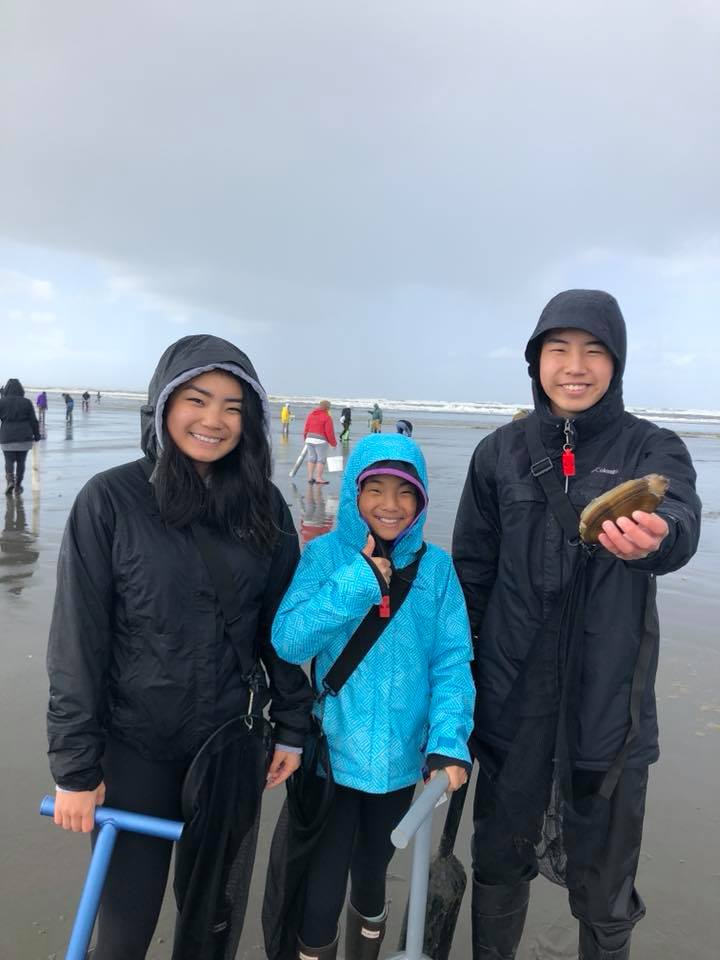
By Mark Yuasa
The future looks merry and bright whether you find yourself yearning to dig a batch of razor clams along the coast for the holiday dinner table or ringing in the New Year by catching a winter chinook in central Puget Sound.
First off let’s dig into this news by the Washington Department of Fish and Wildlife (WDFW), which approved digging dates prior to Christmas, and announced an additional tentative 26 days from Dec. 30 through Feb. 28.
“The (season has been going well with mostly limits,” said Dan Ayres, the head WDFW coastal shellfish manager. “There were a lot of great digging days this fall, and we’re looking forward to a productive spring season as well.”
Upcoming digs are Dec. 15 (low tide is plus-0.6 feet at 4:28 p.m.) at Long Beach, Twin Harbors and Mocrocks; Dec. 16 (0.1 at 5:07 p.m.) at Long Beach, Twin Harbors and Copalis; Dec. 17 (minus-0.2 at 5:43 p.m.) at Long Beach, Twin Harbors and Mocrocks; Dec. 18 (-0.3 at 6:18 p.m.) at Long Beach, Twin Harbors and Copalis; Dec. 19 (-0.4 at 6:52 p.m.) at Long Beach, Twin Harbors and Mocrocks; Dec. 20 (-0.3 at 7:27 p.m.) at Long Beach, Twin Harbors and Copalis; Dec. 21 (-0.2 at 8:02 p.m.) at Long Beach, Twin Harbors and Mocrocks; Dec. 22 (-0.1 at 8:38 p.m.) at Long Beach, Twin Harbors and Copalis; and Dec. 23 (0.2 at 9:16 p.m.) at Long Beach, Twin Harbors and Mocrocks.
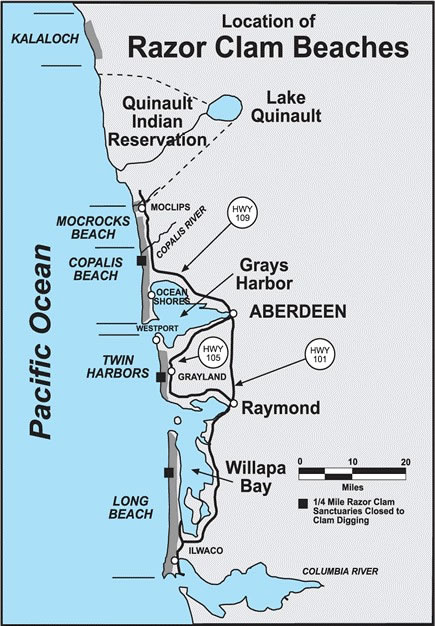
The daily limit Dec. 15-23 remains at the more liberal first 20 clams dug regardless of size or condition. But will be lowered to the usual 15 clams daily limit beginning Dec. 30. The switch to the normal daily limit is necessary to avoid exceeding the recreational quota set for the 2021-2022 season.
“Returning to a 15-clam limit on Dec. 30 should help ensure we have sufficient clams remaining to be able to offer digs during the morning spring tides that many people prefer,” Ayres said.
A liberal 67 days of digging began on Sept. 17 and continues through Dec. 31 (51 days have been completed to date) with an estimated 56.3-million harvestable clams – 17.6-million available for sport harvest – on four coastal beaches.
The average take home of bivalves since this season began is about 17.7 to 18.4 razor clams per person overall on almost all days and beaches outside of stormy weather periods.
The latest digs from Dec. 1-9 showed 12,277 diggers at Long Beach with 244,242 clams for 19.1 per person average; 9,864 at Twin Harbors with 186,230 for 18.9; 7,383 at Copalis with 143,655 for 19.5; and 5,852 at Mocrocks with 111,988 for 19.1.
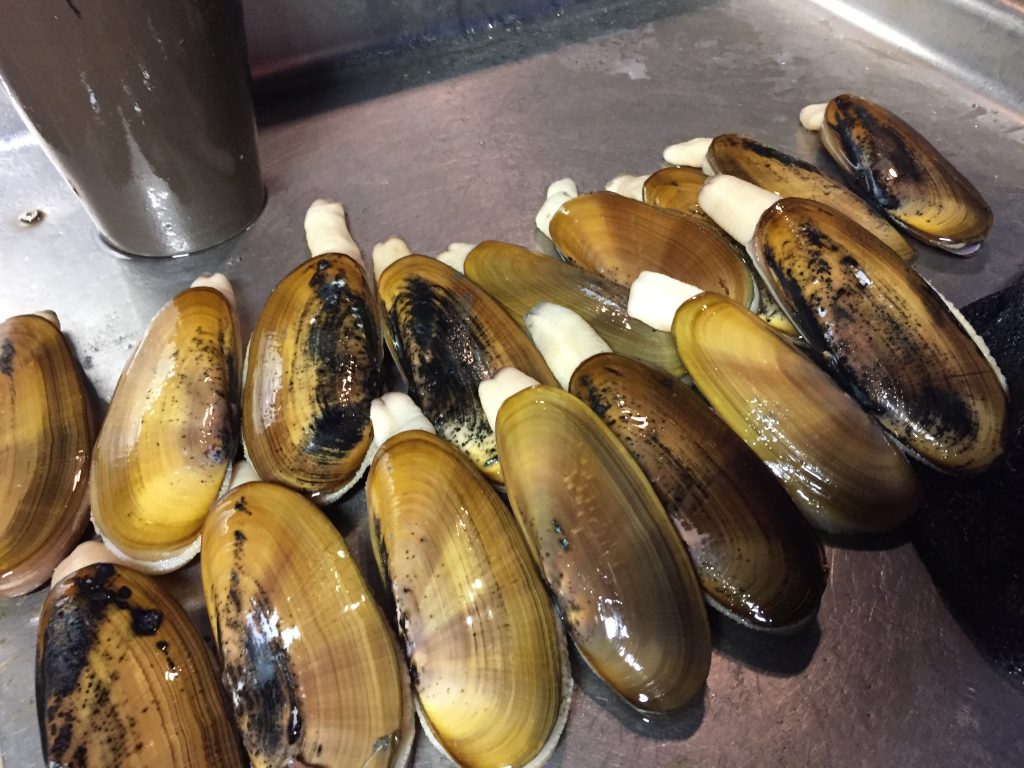
Other tentative upcoming dates are – Dec. 30, and Jan 1, 3, 16 and 29, and Feb. 2 at Long Beach, Twin Harbors and Mocrocks. Dec. 31, and Jan. 2, 4, 15 and 17, and Feb. 1, 18 and 26 at Long Beach, Twin Harbors and Copalis. Jan. 5, 14, 20 and 31, and Feb. 14 and 28 at Long Beach only. Feb. 3 at Copalis only. Jan. 18 and Feb. 17 at Long Beach and Twin Harbors only. Jan. 19 and 30, and Feb. 16 at Long Beach and Copalis only. Feb. 15 and 27 at Long Beach and Mocrocks only.
Note: Not all beaches are open for every dig, so diggers are encouraged to make sure their intended destination is open before heading out.
Ring in the New Year with winter chinook
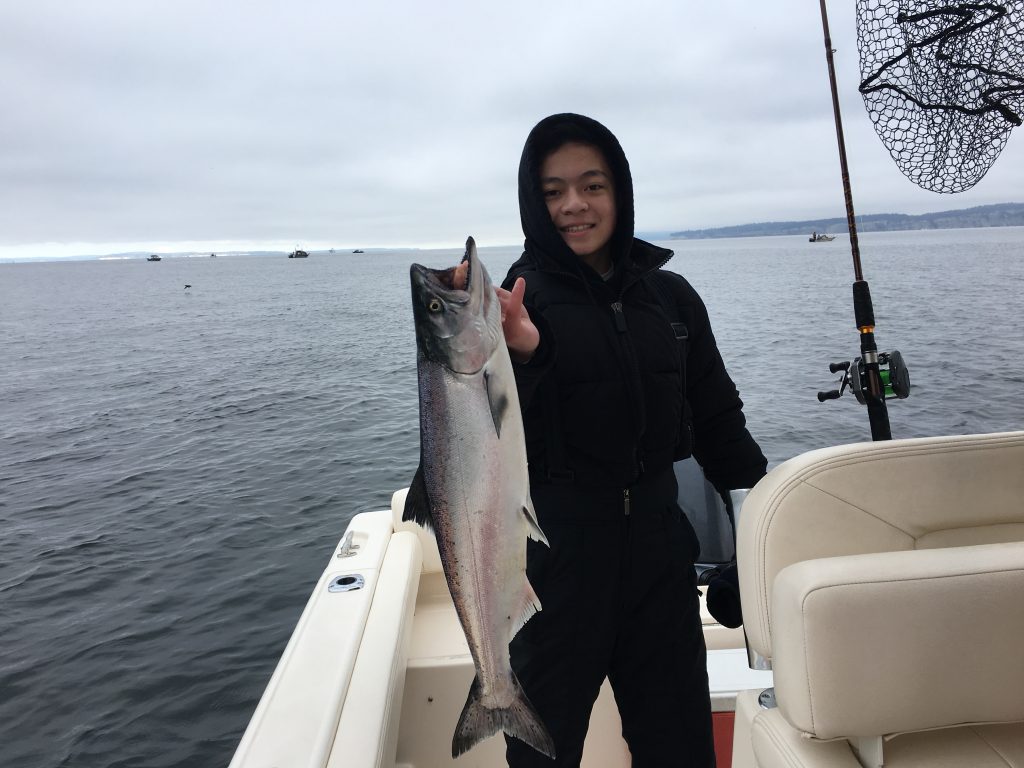
The buildup for the winter chinook salmon fishery in central Puget Sound (Area 10) is like a kid waiting to open presents on Christmas, but it will come with reduced days on the water.
Salmon anglers can go starting Jan. 1 with fishing allowed Saturdays, Sundays and Mondays only, and will close on March 31 or sooner if catch guidelines are achieved before then.
WDFW decided a more cautious approach since Area 10, open daily on New Year’s Day in 2021, lasted just 18 days as the catch guideline of total “unmarked” wild-chinook encounters was quickly eaten up. The WDFW sport-fishing advisory board requested a later start date of Feb. 1 with a reduced daily limit of one hatchery chinook, but wasn’t the approach by WDFW.
The total chinook encounter of 8,475 compared to 3,715 in 2021 should allow for a somewhat longer season, and WDFW will manage to that threshold.
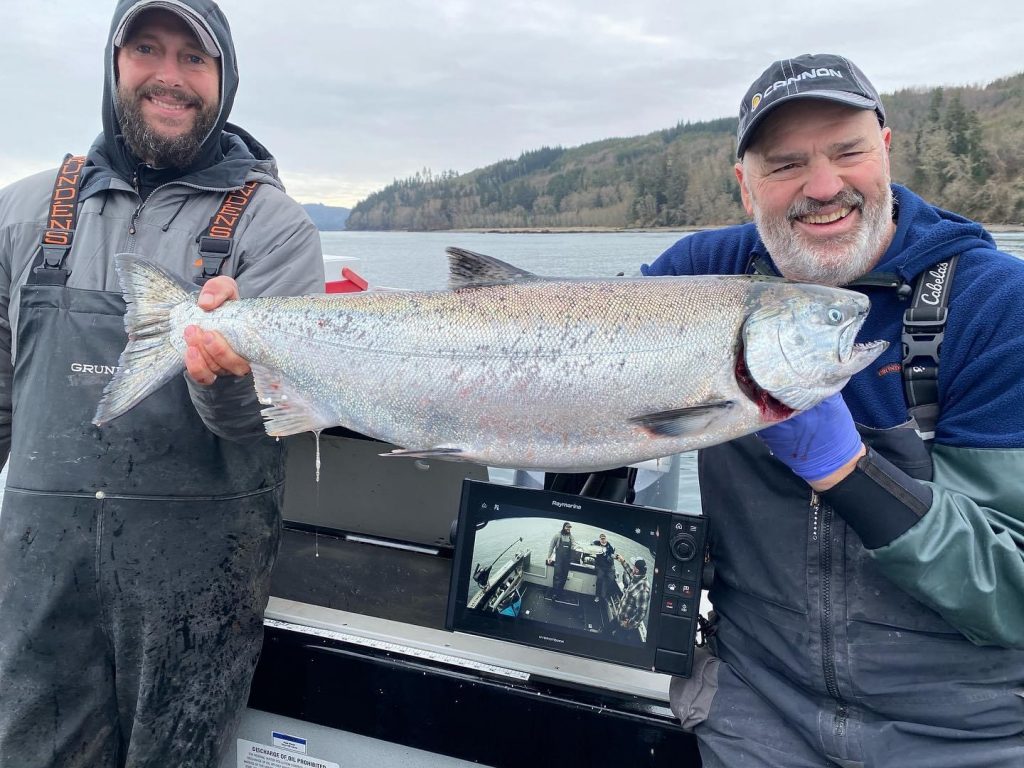
Other management objectives are 1,105 total unmarked “wild” chinook encounters (up from 579 in 2021); and 7,319 total sublegal encounters (up from 3,224 in 2021), which are fish under the 22-inch minimum size limit.
WDFW plans to have a test fishing boat conduct assessments, plus there is dockside sampling. WDFW plans to provide weekly catch estimates beginning Jan. 10. If catch data suggests a surge then changes could occur to hopefully extend the fishery into early spring.
Head out to Jefferson Head; West Point to Meadow Point; Point Monroe; Richmond Beach; Edmonds oil refinery dock; Yeomalt Point; Restoration Rock; Rich Passage; Elliott Bay at Fourmile Rock and Alki Point; Allen Bank off southside of Blake Island; off Fauntleroy Ferry Landing; and the Manchester and Southworth areas.
Locating baitfish schools equates to catching salmon since they’re brains are wired to constantly feed on herring and candlefish baitfish schools, and other small crustaceans.
Be sure to stick your presentation right off the bottom, and most anglers will troll with downriggers, mooch or jig. Downrigger trolling is the top choice to cover a lot of ground especially in the winter months when baitfish can be sparse.
Nibbles and bites
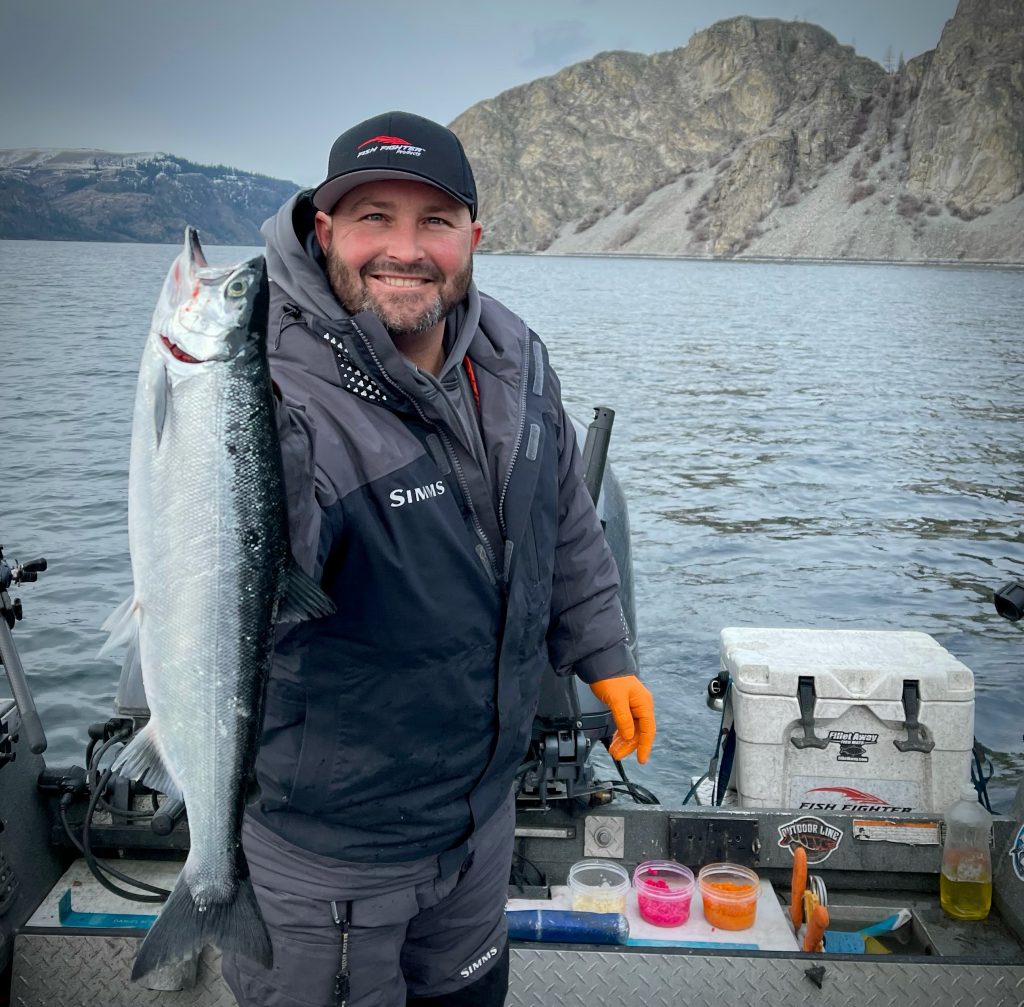
–The Lake Roosevelt kokanee and Rufus Woods Reservoir triploid trout fisheries in north-central Washington have gotten off to a hot start and look for this to continue all through the winter-time, says guide Austin Moser, owner of Austin’s Northwest Adventures in Wenatchee. These aren’t your typical kokanee and many are tipping the scale in the 20- to 24-inch range with a few larger. The triploids are pushing down the scales in the 3- to 6-pound range with some even larger.
–Anglers should still plan on hitting local lakes that were recently planted late last month for WDFW’s “Black Friday” trout fishing extravaganza as well as more fish going into lakes this past week.
On Dec. 8, Kress got some larger steelhead planted on top of thousands of rainbows last month. Battleground received 4,000 on Nov. 30, Klineline had 2,038 on Nov. 29, and Lacamas got 6,000 on Nov. 29. In Snohomish County, Goodwin was planted with 3,000 and Roesiger got 2,000 on Nov. 30.
In King County, head to Green and Beaver. In Snohomish County, try Silver, Tye, Gissburg South Pond and Ballinger. In Island County, go to Cranberry. In southwestern region try American, Tanwax, Bradley, Spencer, Kokanee, Leland, Sylvia, Offutt, Goose and Rowland.
In eastern Washington head to Hatch, Williams, Fourth of July, Elton Pond, Roses or Hog Canyon.
–It’s a “better late than never” scenario for Puget Sound squid jiggers finding improved catches compared to early autumn action although it is still hit and miss at times. Some of the most popular places are the Seattle waterfront at Piers 69 and 70, around the Big Wheel or the Seattle Aquarium Pier.
Other “go to” spots are the Edmonds Marina pier; Seacrest Boathouse Pier in West Seattle; Des Moines Pier; A-Dock and Shilshole Pier; Les Davis and Point Defiance Boathouse piers in Tacoma; Fauntleroy Ferry Dock; Illahee State Park Pier; and the Waterman and Indianola piers in Kitsap County. Boat anglers are also scoring squid off the Edmonds Marina, Shilshole Bay and Elliott Bay.

